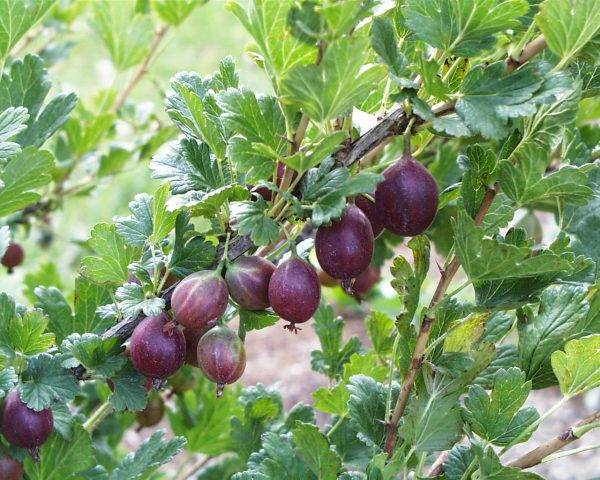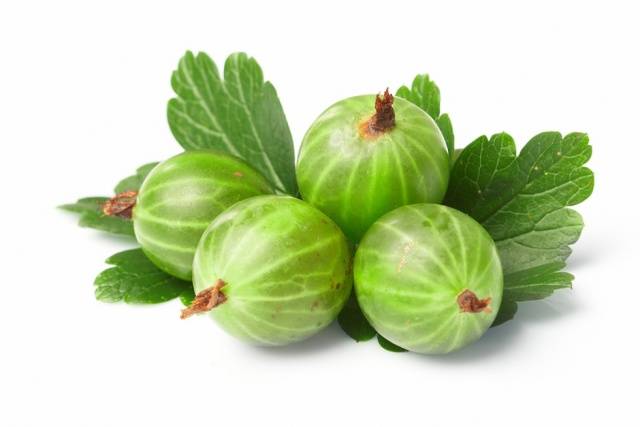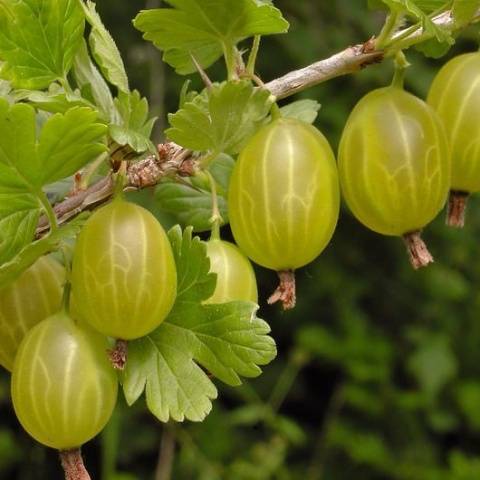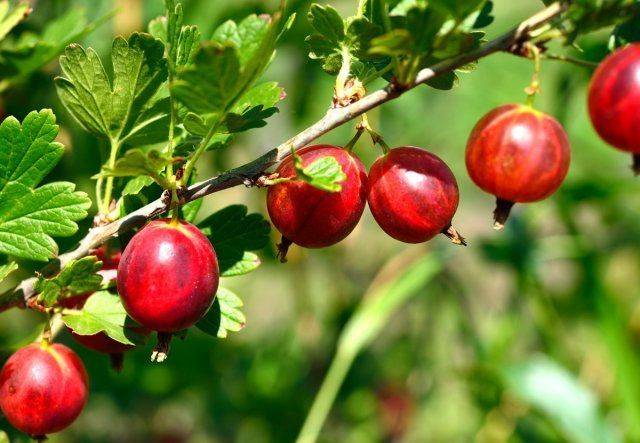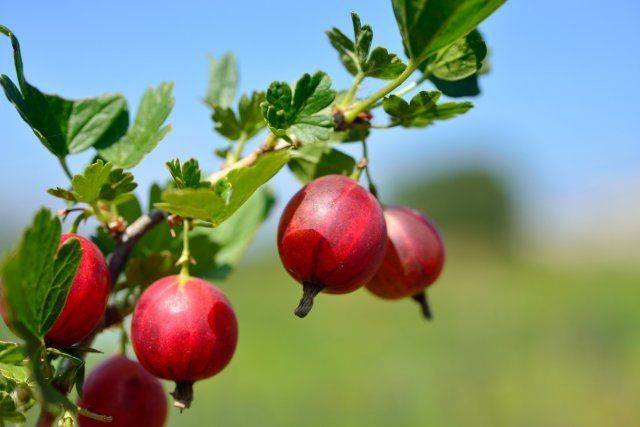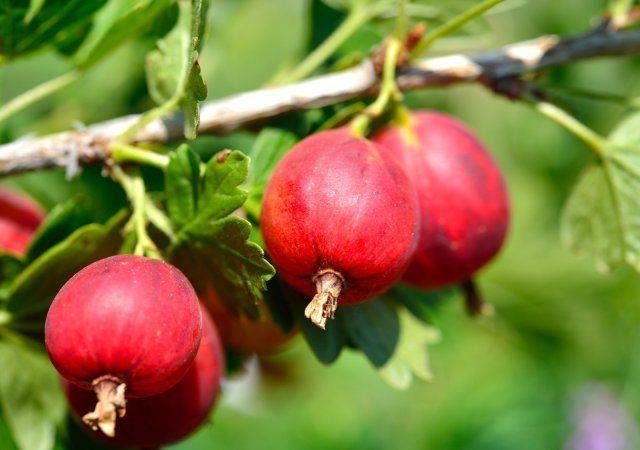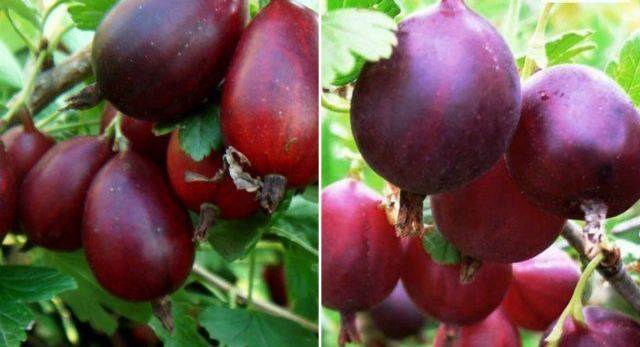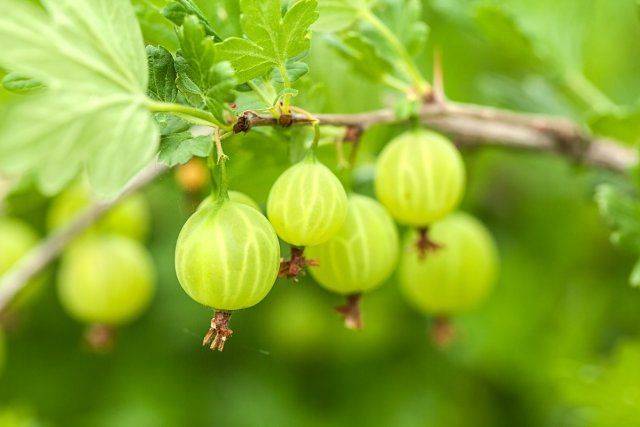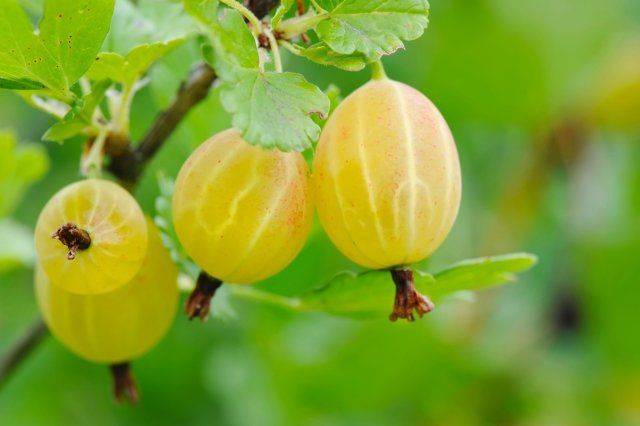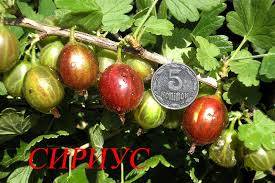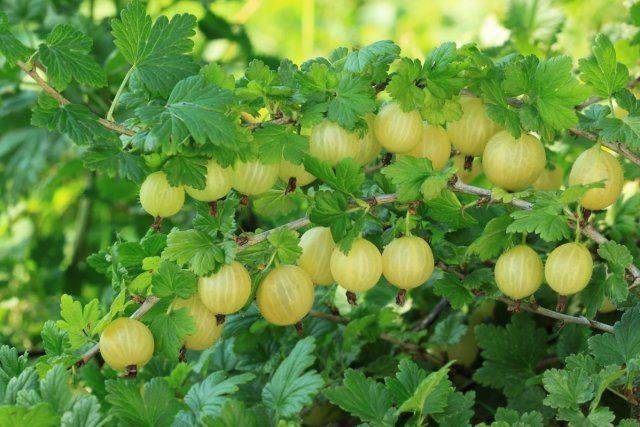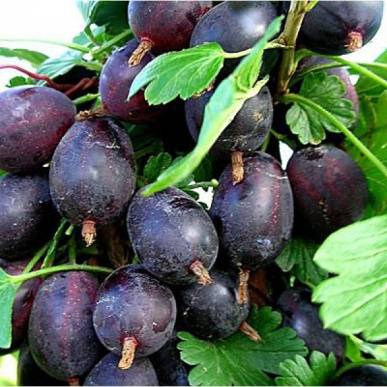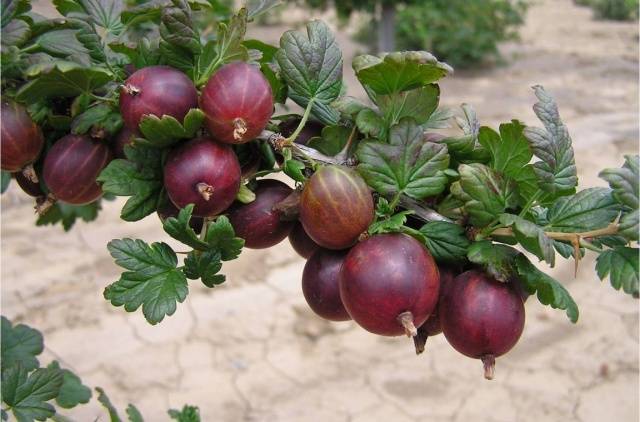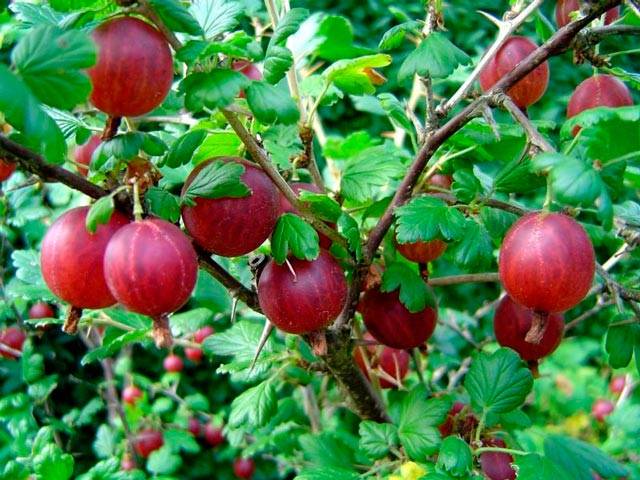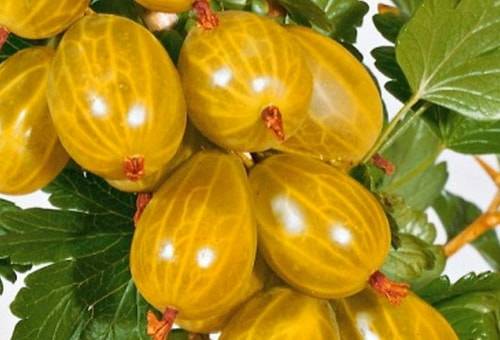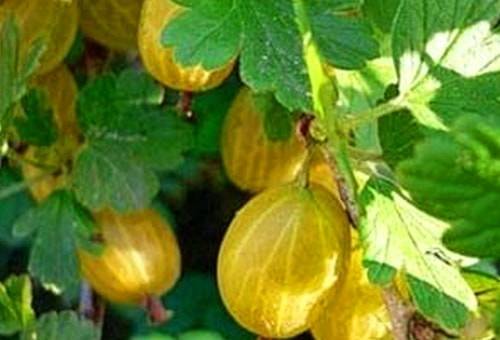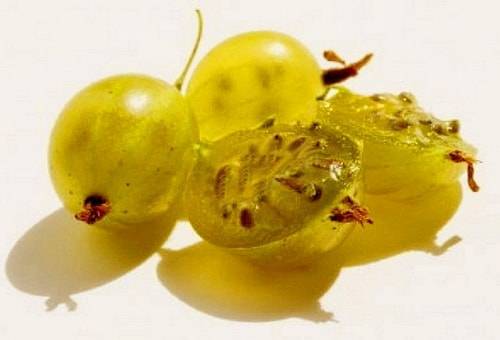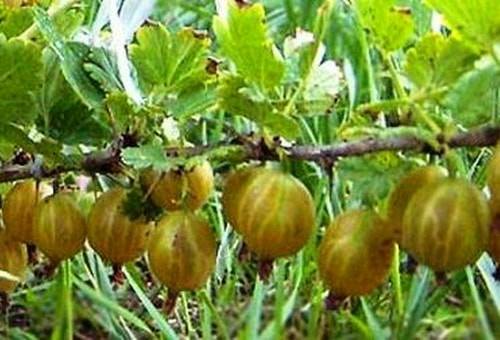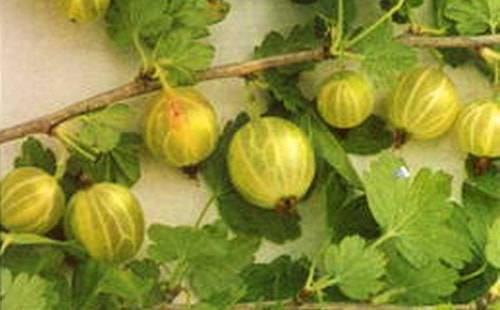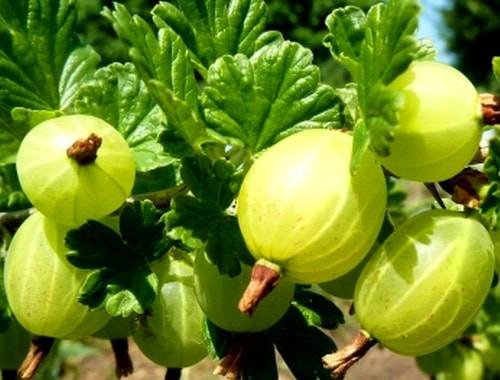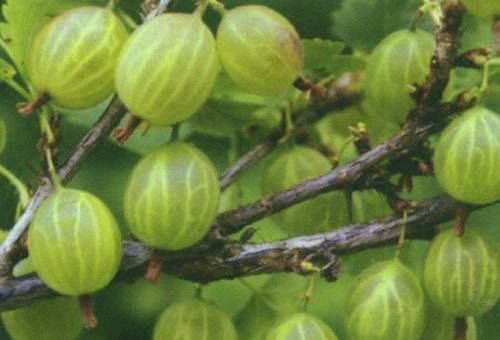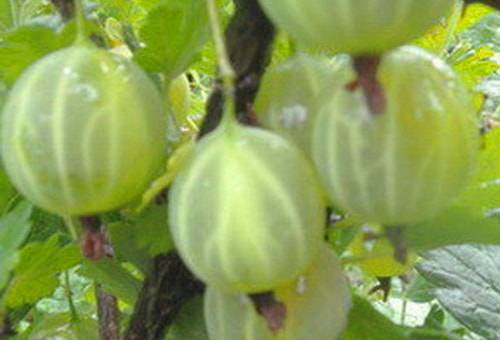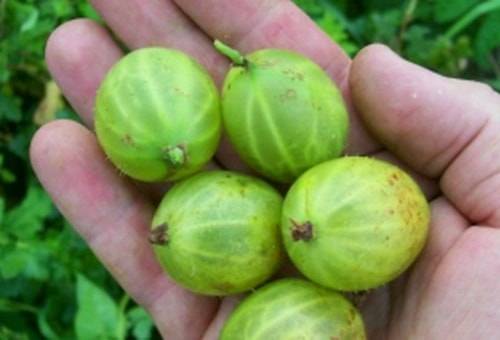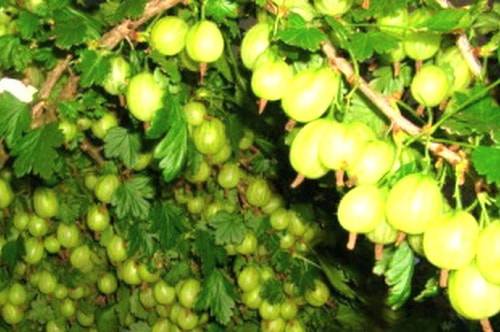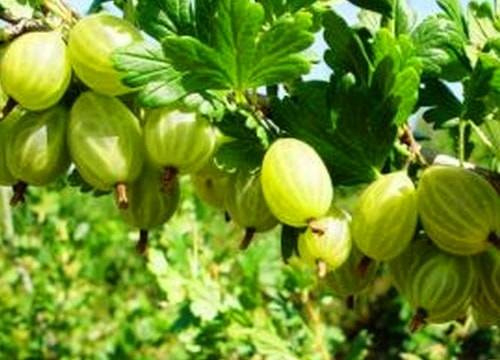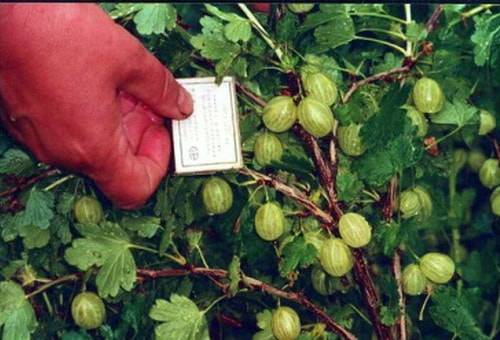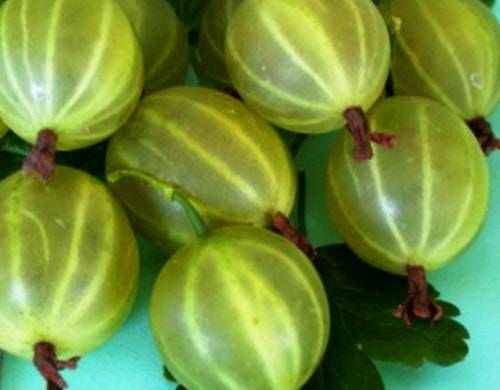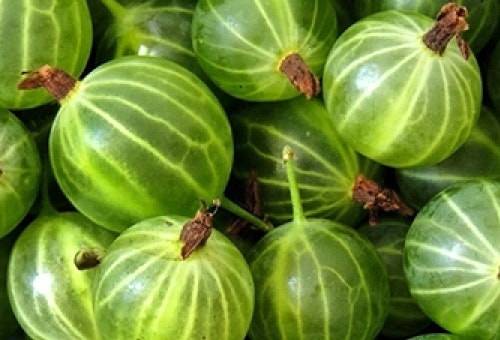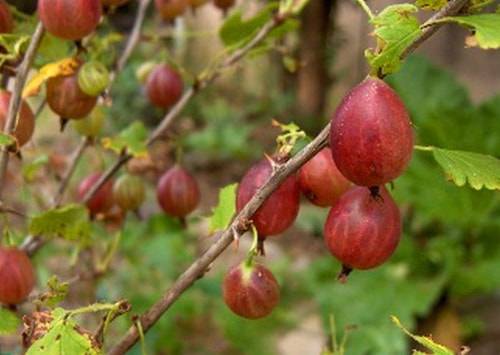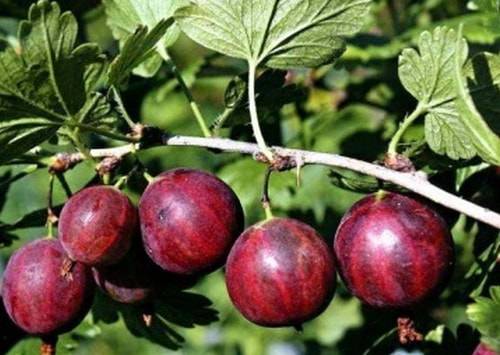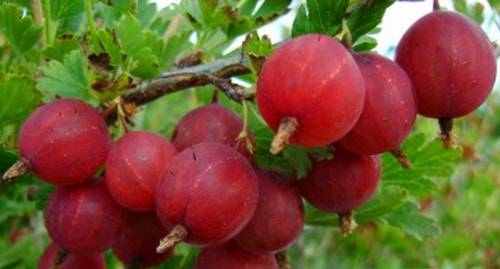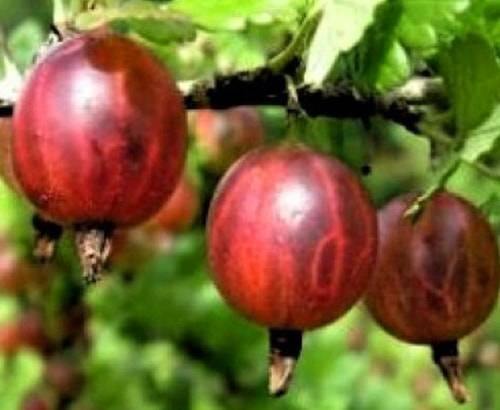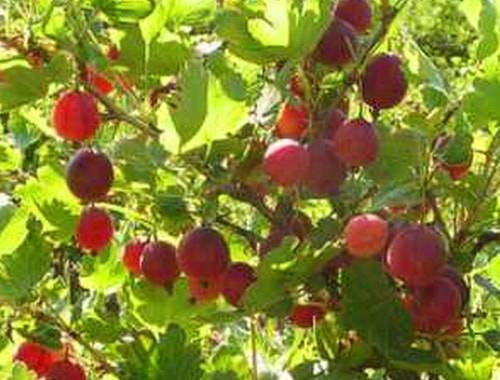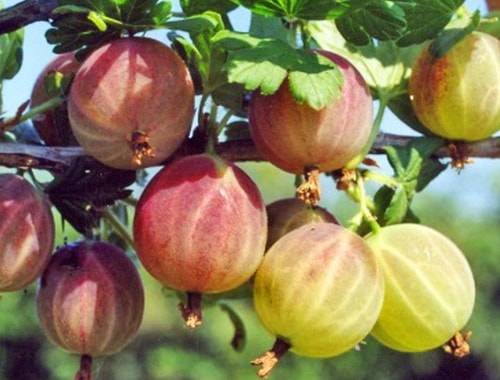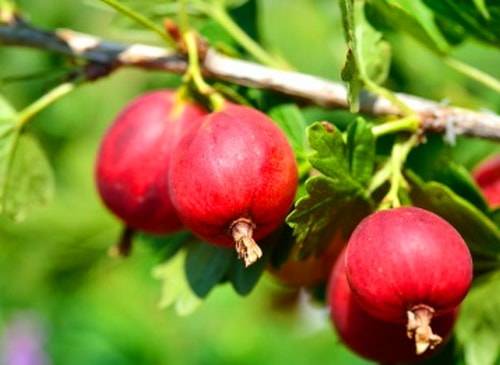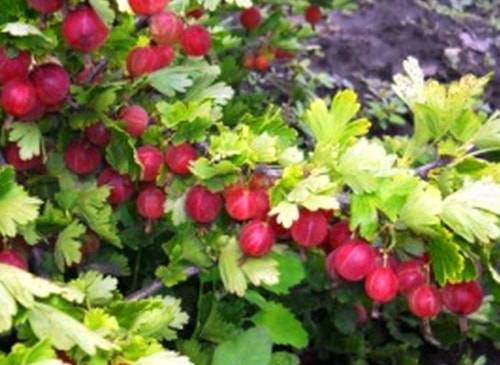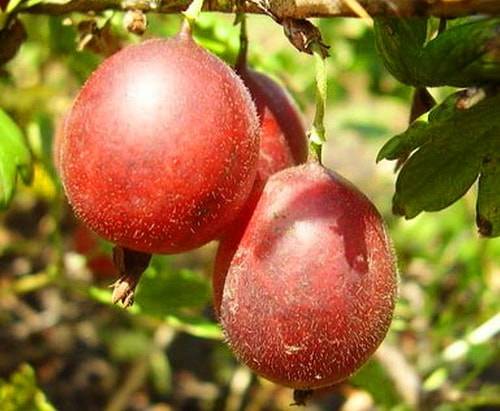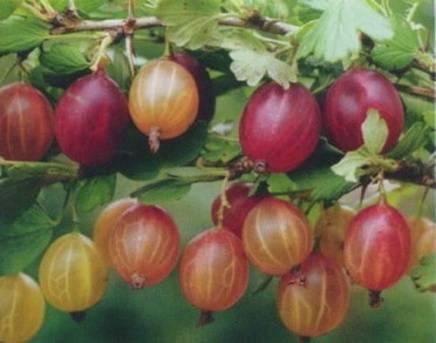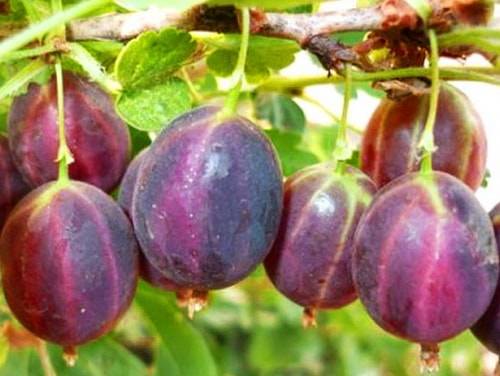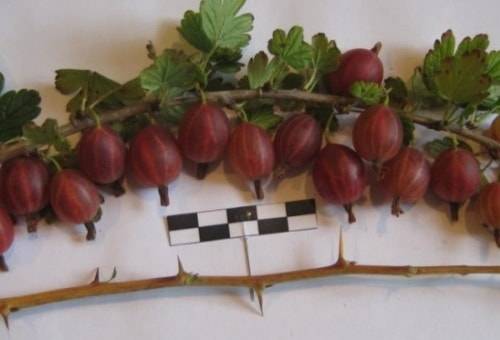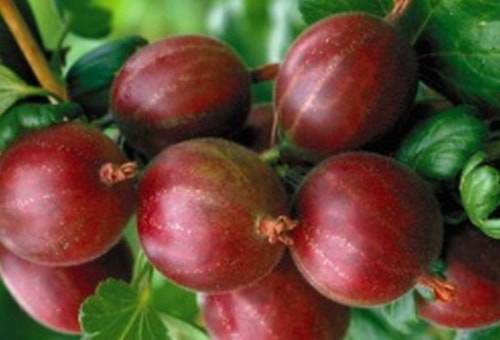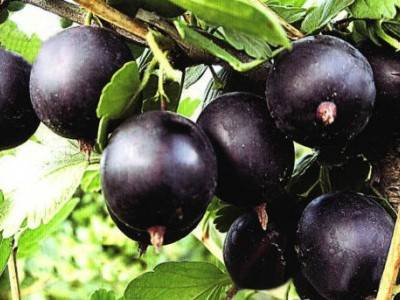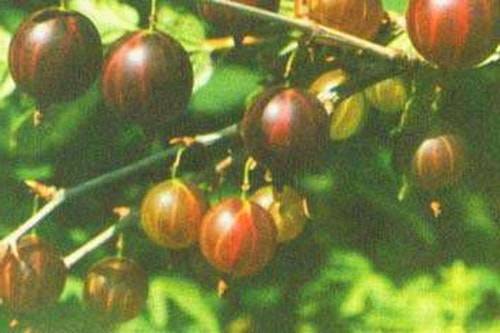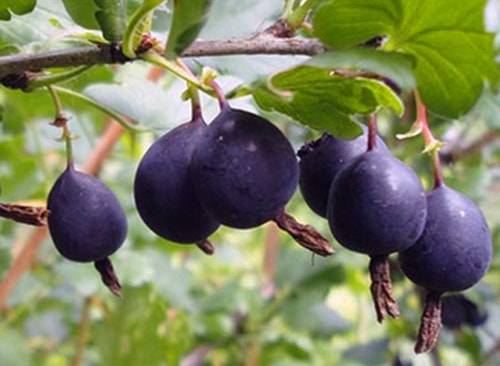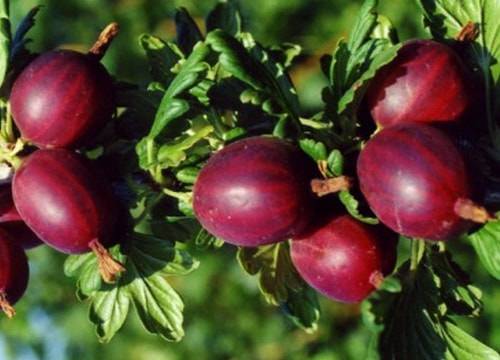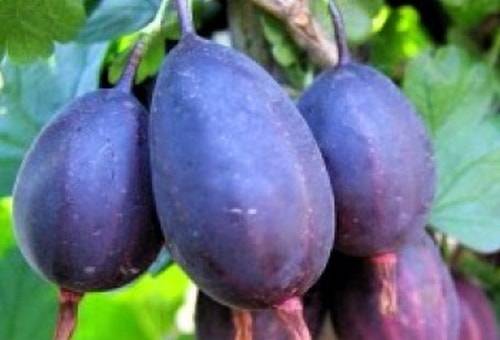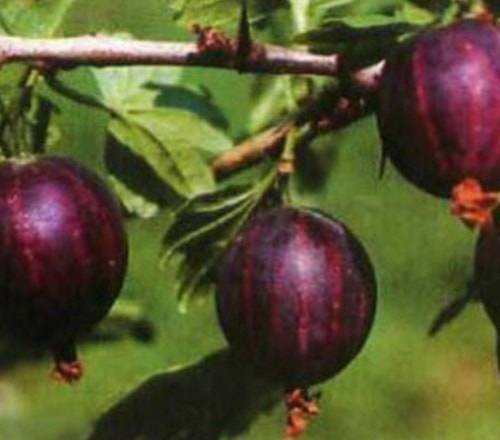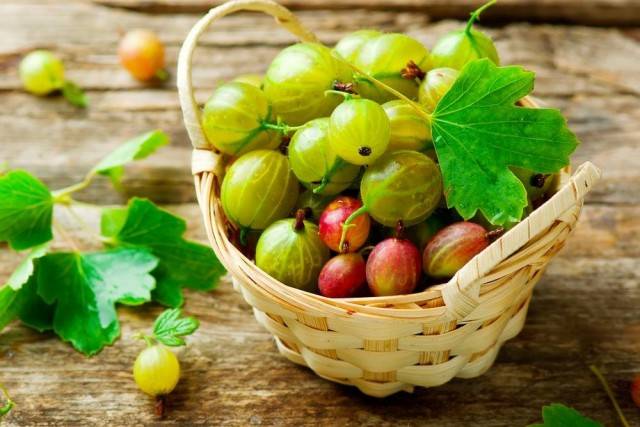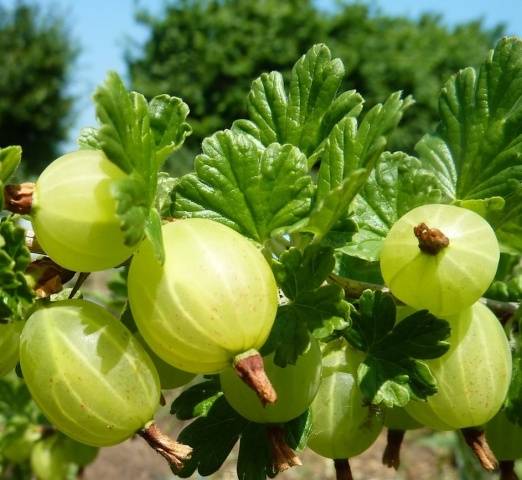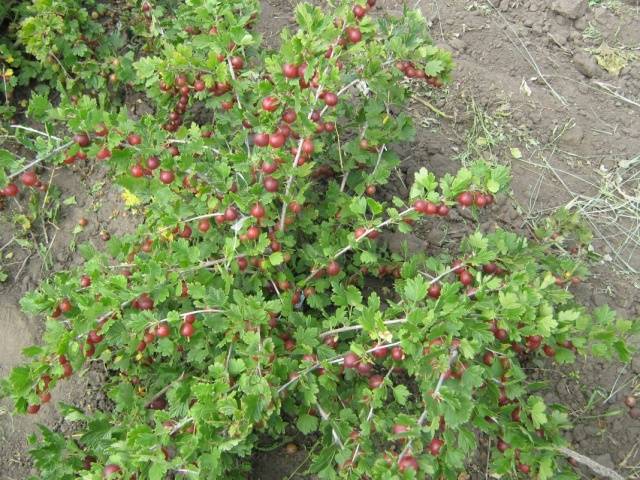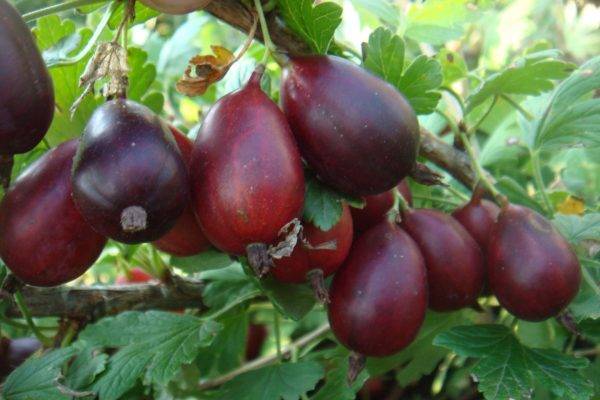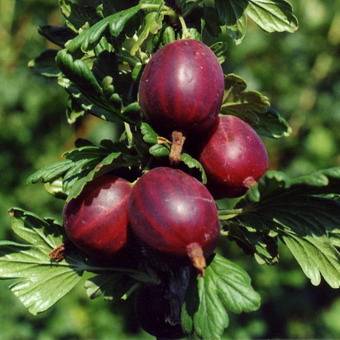Content
- 1 Classification of varieties
- 2 Highest-yielding gooseberry varieties
- 3 Large-fruited gooseberry varieties
- 4 Sweet gooseberry varieties
- 5 Thornless gooseberry varieties
- 6 Classification of varieties by maturity
- 7 Systematization of gooseberry varieties by fruit color
- 8 Yellow gooseberry varieties
- 9 Green gooseberry varieties
- 10 Red gooseberry varieties
- 10.1 Belarusian red
- 10.2 Captivator
- 10.3 Gingerbread man
- 10.4 Consul (Senator)
- 10.5 Candy
- 10.6 Affectionate
- 10.7 Revolt
- 10.8 Sadko
- 10.9 Seedling Lefort
- 10.10 Sirius
- 10.11 Krasnoslavyansky
- 10.12 Masheka
- 10.13 Michurinets
- 10.14 Russian red
- 10.15 Salute
- 10.16 Hinnonmaki Red
- 10.17 Chokeberry varieties
- 10.18 Grushenka
- 10.19 Commander
- 10.20 Harlequin
- 10.21 African
- 10.22 Chernomor
- 10.23 Prune
- 10.24 Kazachok
- 10.25 Neslukhovsky
- 10.26 Black negus
- 11 Classification of varieties by date of registration in the State Register
- 12 How to choose the right variety
- 13 The best gooseberry varieties for the Moscow region
- 14 How to choose gooseberry varieties for the Leningrad region
- 15 The best gooseberry varieties for Siberia
- 16 The best gooseberry varieties for the Urals
- 17 The best gooseberry varieties for central Russia
- 18 The best gooseberry varieties for the Northwest
- 19 Conclusion
- 20 Testimonials
All gooseberry varieties are considered the most productive for the first 10 years. Over time, the berries gradually become smaller. The bushes can grow up to 2 m high. Thanks to independent renewal by basal shoots, the life of the plant reaches 40 years. However, a person must take part in the formation of the crown by removing old branches. Depending on the variety, from 5 to 12 kg of berries can be harvested from the bush.
Classification of varieties
Initially, by origin, the culture was divided into two main types:
- European varieties bring large berries with a bright aroma and excellent taste. However, the disadvantage is poor disease resistance. In addition, the plant is difficult to reproduce.
- American varieties are hardy. The plant reproduces easily. You can increase the number of bushes by layering or cuttings. A negative feature is the large thorns on the branches. The fruits are much smaller, and the palatability suffers.
The breeders took into account all the peculiarities of the culture and bred a third group of varieties - American-European. The result is a gooseberry with a high yield, tasty fruits, frost and disease resistant.
Gardeners often dislike shrubs because of the thorns. Thorns interfere with harvesting, plant care. However, there are varieties with few thorns or completely thornless.
In terms of ripening, like all crops, gooseberries are early, medium and late.There are varieties that yield in the intermediate period: medium early or medium late.
The culture is classified according to self-fertility:
- self-pollinating varieties are capable of bearing fruit on their own, even if there are no pollinators nearby;
- self-fruitless varieties are not capable of producing crops if there is no pollinator nearby.
Disease resistance of the culture is medium and high, but only two varieties are 100% non-susceptible to spheroteca: Whitesmith and Spinefree.
By the color of the berries, gooseberries are divided into the following groups:
- Chokeberry. This group includes purple or dark red berries, which acquire a black hue when ripe.
- Yellow-fruited. The berries of this group, when ripe, acquire golden, orange, amber and other shades.
- Green-fruited. Berries remain green even after ripening. Sometimes from the sun, the fruits can acquire a slight yellowness.
- Red-fruited. Ripe berries turn red with burgundy, pink and other shades.
In addition to the color of the berries, the culture is classified according to the shape of the fruit:
- oval;
- spherical;
- pear-shaped;
- ovoid;
- keg shape.
No less important is the classification according to the resistance of berries to mechanical damage. The stronger the skin of the fruit, the longer the harvest will last, and the more it will be transported.
When choosing a variety, gardeners often look at the size of the berries. Fruits weighing more than 5 g are considered large. The medium-fruited group includes plants that bear berries weighing less than 5 g. Additionally, all fruits can be divided according to the structure of the skin, which is smooth and hairy.
All bushes up to 1.5 m high are classified as medium-tall varieties. There are plants with a height of more than 1.5 m. Such gooseberries are classified as tall varieties.
Highest-yielding gooseberry varieties
Productivity depends not only on the characteristics of the variety. This characteristic is influenced by care, climatic conditions, soil condition. The most productive varieties are presented in the table.
High-yielding | Medium-yielding |
Mysovskiy 17 | Bottle green |
Industry | Red large |
Houghton | Lancer |
Date fruit | Lemon gigantic |
English yellow |
|
Large-fruited gooseberry varieties
Most summer residents try to plant large-fruited varieties on the site in order to please the children. With ordinary courting, on average, the mass of berries reaches 5-6 g. There are specially bred crops that bear gigantic fruits weighing up to 54 g. To grow such a gooseberry, a summer resident will have to invest a lot of work. It is easier to give preference to traditional varieties and comply with the conditions of agricultural technology.
Name | Description |
People's | A mid-season crop produces pink berries weighing more than 5.1 g. Tall shrub with few thorns. The plant is not hardy. |
Beloved | Gooseberries are medium ripening. Berries weighing up to 4.5 g are green, slightly yellow when ripe. A medium-sized bush with small thorns. The plant is winter-hardy, but in rainy summer it is affected by anthracnose. |
Plum | The ripening dates of the berries are medium early. Fruits grow up to 6.5 g. The color, shape and aroma of the berry resemble a plum. The bush is tall, neat with large thorns. Frost resistance is high. |
Sweet gooseberry varieties
Lovers of sweet berries don't even care about their size. For a true gourmet, taste is the most important thing.
White Nights
The berries are small, weighing about 3 g, but very sweet. The yield reaches 6 kg per plant. The variety is early, resistant to frost, powdery mildew.
Candy
Fragrant and sweet fruits grow with a maximum weight of 3.1 g. The variety is universal, tolerates drought and frost. The branches are covered with medium sized thorns. The yield depends on the growing conditions and varies from 1.8 to 6 kg.
Pink 2
The parents are the Seedling Lefora and Phenicus. Medium early large-fruited variety.The average weight of a berry is 6 g, but there are giants weighing more than 10 g. Up to 5 kg of sweet berries are harvested from the plant.
Seedling Lefort
The yield of the variety varies from 2 to 3.5 kg. Ripening of the crop is medium early. Plant with small thorns, hardy. Fruit weight 3.8 g.
Cooperator
Ripening period is average. The berries are large, weighing up to 8 g. The yield of the variety with good care reaches 6.9 kg per plant. There are few thorns. Spreading bush, dense. The variety is resistant to pests and powdery mildew.
Belarusian sugar
The bush is tall, neatly formed. The branches have medium-sized thorns. The ripening period of the crop is average. The mass of large berries reaches 8 g. Productivity - up to 6 kg per plant. The variety is moderately resistant to powdery mildew.
Russian yellow
The variety is excellent against powdery mildew. Ripening of the crop refers to the middle period. The gooseberry has small thorns. The berry mass reaches 7 g. One plant brings about 4 kg of yield.
Sirius
The variety is small-fruited, but lovers of very sweet berries like it. Ripening periods are medium late. The berry mass is from 2 to 3.5 g. The yield is high, up to 7.3 kg per plant. A bush without thorns, withstands frost.
Beryl
The parents are the varieties Malachite and Nugget. The bush is dense, not very spreading. There are few thorns. Fruit ripening period is average. The mass of berries is about 3 g. The yield varies from 3 to 9 kg per plant. The shrub is considered winter-hardy, not afraid of powdery mildew.
Chernomor
Small-fruited gooseberries are famous for their sweet berries. Ripening periods are medium late. The bush is covered with small thorns. Fruit weight 3 g. Productivity reaches 4 kg per bush. The plant is winter-hardy, not afraid of powdery mildew.
Thornless gooseberry varieties
Thornless gooseberries are loved by children and adults. The lack of thorns makes it easier to pick berries. In terms of taste, it cannot be said that thornless varieties win, but they also do not lag behind their relatives.
Name | Short description |
Gulliver | The berry is small, but the taste is pleasant sweet with a mild sourness. The variety is winter-hardy, not afraid of powdery mildew. |
Consul | Unusually tasty berries containing a lot of ascorbic acid. Due to the thin skin, the fruit must be processed immediately after harvest. |
Matveevsky | The bushes are moderately spreading, loving free space. The fruit weighs about 4.5 g. Ripe berries do not have the property of shedding from the bush. |
Eaglet | The variety is popular due to its high yield, which reaches 6.6 kg per plant. The shrub tolerates frost well. |
Redball | Summer residents fell in love with gooseberries due to their resistance to all known diseases. The variety is considered early maturing. |
The video tells about the cultivation of a thornless gooseberry:
Classification of varieties by maturity
To provide the family with tasty and healthy berries for a whole season, 1-2 gooseberry bushes of different ripening periods are planted on the site. It should be borne in mind that the early maturing culture begins to bloom in April. For cold regions, this option is dangerous. The early ovary may suffer from frost damage.
Early ripe
The group of early ripening varieties includes gooseberries, in which the ripening of the crop falls on the beginning or middle of June. Several worthy representatives are shown in the table.
Name | a brief description of |
Spring | The variety is high-yielding, resistant to cold and disease, but has one drawback. After ripening, the fruits must be removed in time. The berries do not crumble, but they lose their taste. |
Grandee | The gooseberry bears large red fruits weighing up to 15 g. The plant has small thorns. |
Affectionate | The thornless variety bears berries weighing 7 g. Bushes are small, compact. |
Tender | The characteristics are similar to the Laskovy variety. The difference is the presence of small thorns. The culture needs regular pruning. |
Pax | The culture of English selection bears fruit weighing up to 10 g. There are few thorns on young branches. |
Beloved | The shrub is rarely affected by insects, it is resistant to spheroteca.When ripe, the berries acquire a yellow tint. Fruit weight is about 4 g. |
Mid-season
Medium-ripening gooseberries are ready for harvest from mid-July. Consider the worthy representatives of this group in the table.
Name | a brief description of |
Nekrasovsky | The bushes are moderately spreading. Ripe berries have a plum flavor. The purpose is universal. |
Garkate | A variety of Latvian selection. Ripening fruits turn dark purple in color. The berry mass is about 4 g. |
Nova | The gooseberry has no thorns on the fruiting branches. The mass of the red berry is more than 6.5 g. |
Purman | The gooseberry resists the spheroteca, but is weak to harsh winters. The kidneys freeze out in the cold. Cherry-colored fruits with small villi weigh up to 4.5 g. |
Souvenir | Gooseberries are almost never affected by diseases, tolerates winters well, and quickly grows new shoots. The fruits weigh about 9 g. |
Late ripening
Harvesting of late gooseberries falls in late July - early August. Let's look at the worthy representatives of this group in the table.
Name | a brief description of |
Korshudin | The fruits do not have a pronounced taste, are small, with a large presence of acid. The variety is designed for amateurs. The bush grows thin thorns. |
Defender | The high-yielding variety can withstand frosty winters. Disease resistance is average. Bushes with needles. |
Mucurines | There are small thorns on the branches. The yield is high. The mass of berries is more than 7 g. |
Pokrovsky | The fruits are shaped like pears. Gooseberry is endowed with excellent immunity, resistant to bad weather conditions. |
Seedling Change | The bush grows up to 1.8 m high. There are small thorns on the branches. The fruits are pink on top, green on the inside. |
Systematization of gooseberry varieties by fruit color
By the color of the berries, the gooseberry is divided into four groups. Fruits during ripening can acquire different shades, which depends on weather conditions, varietal characteristics and the observance of agricultural cultivation techniques by gardeners.
Yellow gooseberry varieties
Altai license plate
Fruit weight 8 g. The bush is low, almost not spreading. It takes root in all regions. The variety is fruitful, medium early, not affected by powdery mildew.
Amber
The bushes grow tall, the crown is spreading. Oval-shaped fruits weigh about 6 g. Early ripening. Gooseberries tolerate frosty winters well. I did not pass registration in the State Register, but gardeners grow in all regions.
Altai yellow
A culture with a thickened crown, spreading branches of medium height. Fruit weight reaches 6 g. Ripening is medium late. Fruits are sweet, but prone to cracking in rainy summers.
Kursu Dzintars
The plant is of medium height. The crown is compact, almost not spreading. Fruits are sweet, oval, weighing about 3 g. Ripening periods are average. Gooseberries are suitable for all regions.
Honey
Tall culture with a medium spreading crown. Pear-shaped fruits are sweet, fragrant, weighing up to 6 g. Gooseberries are very capricious to care for, subject to diseases, resistant to cold, recommended for central regions.
Russian yellow
Medium vigorous plant. Egg-shaped fruits weigh up to 6 g. The skin is covered with a waxy bloom. Ripening periods are average. Gooseberry is resistant to wintering, drought, recommended for the Ural and North-West regions.
Anniversary
The branches are slightly spreading, curving towards the ground. Berries are oval, weighing about 5.5 g. Gooseberries are frost-resistant, rarely affected by powdery mildew. Ripening periods are average. The variety is recommended for the Central Black Earth Region.
Spring
The plant is of medium height, branches are straight, almost not spreading. Rounded fruits weigh 3-5 g. Early ripening. The gooseberry is winter-hardy, it is not afraid of powdery mildew, it is grown in all regions.
Green gooseberry varieties
Beryl
Medium vigorous plant with branches curved towards the ground. Fruits are sweet and sour, round, weighing up to 9 g. The culture tolerates wintering well, but is moderately resistant to diseases.Ripening periods are average. The variety is recommended for the West Siberian and Ural regions.
Grossular
Tall shrub with straight shoots. Medium early culture, recommended for southern regions. The mass of berries is from 4 to 8 g. The shrub is resistant to drought and powdery mildew.
Green rain
A medium-sized plant with slightly spreading branches. The fruits are sweet, weigh about 8 g. The culture is medium-late, resistant to wintering and drought, rarely affected by fungi, it is recommended for the North-West region.
Pushkin
A medium-sized bush with slightly spreading branches. The mass of the sweet berry is about 5 g. The gooseberry is medium early, it tolerates wintering, it is recommended for growing in all regions.
Baltic
A spherical shrub of medium height with straight branches. The oval-shaped berries weigh about 4 g. The timing of the full ripening of the crop is average. The winter-hardy variety is grown in all regions.
Belarusian sugar
A tall shrub with a compact crown. The harvesting period is medium early. Oval-shaped fruits weigh from 4 to 8 g. The variety is resistant to frost, recommended for the Ural and Siberian regions.
Bottle green
Tall shrub with arched branches. The crown is medium spreading. Large fruits weigh about 16 g. The medium-late winter-hardy variety is grown in the Central region.
Invicta
Tall, spreading plant with good winter hardiness. Berries are oval, weight about 8 g. Medium late culture is grown in all regions.
Snezhana
A medium height shrub with straight branches. The mass of the berry is about 6 g. The skin may brown slightly in the sun. Gooseberries are resistant to natural disasters and are grown in all regions. The ripening time of the crop is medium late.
Naughty
The crown is slightly spreading of medium height. Fruits weigh 4-6 g. Ripening periods are average. The culture is resistant to powdery mildew and wintering, it is recommended for the Central and Northwest regions.
Malachite
A shrub with a strongly thickened crown. Arcuate branches. The mass of a rounded berry is about 6 g. A winter-hardy variety of the middle ripening period is grown in the Central, Ural and other regions with a cool climate.
Mucurinez
A shrub with a neat compact crown. The berries are round, weighing about 7 g. The mid-late gooseberry is distinguished by good winter hardiness; it is grown in all regions.
Dark green Melnikov
A plant with a slightly spreading crown. Early ripening. The mass of berries is about 3 g. The culture is winter-hardy, but it is afraid of powdery mildew, it is grown in all regions.
Ural grapes
Tall shrub with slightly spreading branches. The berries are large, weighing more than 5 g, when overripe they crumble from the branches. Early ripening. Winter hardiness is excellent, but it is afraid of fungal diseases. Grown in the Middle Volga region.
Red gooseberry varieties
Belarusian red
A shrub with hanging branches and a slightly spreading crown. Berries weight about 5 g. Ripening medium early. Frost-resistant gooseberries are grown in the Ural and Siberian regions.
Captivator
Tall shrub with neatly tucked crown. The berries weigh about 5 g. The timing of the harvest is medium late. The gooseberry is winter-hardy, it is not afraid of powdery mildew, it is grown in all regions.
Gingerbread man
The crown of the bush is strongly thickened. The branches are curved. The crop does not crumble when ripe. The berries weigh about 8 g. The culture does not resist bad weather conditions, temperature extremes, but it reproduces well by cuttings. The ripening period of the crop is average. The culture is grown in the East Siberian, Central region.
Consul (Senator)
Thickened tall shrub. Rounded fruits weigh up to 6.5 g. Ripening periods are average. The gooseberry is winter-hardy, it is not afraid of powdery mildew, it is grown in all regions.
Candy
The thickened upright shrub is grown in the East Siberian region. Arcuate branches. Maximum fruit weight 6 g.Ripening period is late. Good winter hardiness is distinguished.
Affectionate
A medium-sized shrub is characterized by intense shoot growth. The mass of berries reaches 8 g. The ripening period is average. Good frost resistance, no fear of powdery mildew. Grown in all regions.
Revolt
Slightly spreading medium-sized shrub brings berries weighing up to 7 g. Resistance to frost and diseases is high. Ripening period is average. The culture is grown in all regions.
Sadko
A medium-sized shrub with a slightly spreading crown. Rounded fruits weigh up to 7 g. Gooseberries are resistant to powdery mildew, grown in all regions. Ripening is medium early.
Seedling Lefort
A tall, spreading plant with the tips of the branches bent down. Fruits are small, weighing 3-4 g. Ripening period is average. Grown in the Northern, Siberian and other cold regions. The variety is considered an excellent pollinator.
Sirius
An upright, tall shrub with powerful branches. The mass of berries is about 4 g. The ripening period is average. Gooseberry is resistant to wintering and dry summer, grown in the Central Black Earth region.
Krasnoslavyansky
Plant of medium height with straight, non-spreading branches. The oval-shaped berries weigh up to 6 g. Ripening periods are average. Gooseberries are moderately resistant to diseases, grown in the Central, North-West region.
Masheka
Dense crown, spreading branches, slightly inclined to the ground. Medium-sized oval berries. Ripening periods are average. Good winter hardiness, poor disease resistance. Gooseberries are grown in the Central Region.
Michurinets
The crown is formed with a sparse arrangement of branches. Arcuate shoots. The berries weigh about 3 g. The ripening period is medium late. Average frost resistance. It can be grown in all regions, if you follow agricultural techniques.
Russian red
Medium vigorous shrub with little branching. The mass of berries is a maximum of 6 g. Culture is of the middle late ripening period. Gooseberry is resistant to wintering and drought, grown in all areas. The only exception is the Ural region.
Salute
A neat shrub of medium height. The variety is excellent against diseases, but average frost resistance. The berries weigh from 2 to 7 g. They are grown in the Central, Volga-Vyatka region.
Hinnonmaki Red
Intensely growing plant with straight branches. The mass of berries is about 7 g. The ripening period is medium early. Good disease resistance. Grown in all regions.
Chokeberry varieties
Grushenka
Slightly spreading compact shrub. Dark purple berries weigh more than 4 g. Branches are thornless. Winter hardiness is high. Grown in the middle lane and the Moscow region.
Commander
A vigorous shrub native to Italy. It takes root best in the southern regions. Branches are thornless. The mass of berries reaches 7 g. Gooseberries are poorly resistant to diseases.
Harlequin
The medium-vigorous shrub bears cherry-colored fruits with a black tint, weighing 4-7 g. The plant is resistant to wintering and powdery mildew. Grown in the West Siberian and Ural regions.
African
The medium-sized shrub bears small berries that taste like black currants. Gooseberry is resistant to frost, drought, disease and is grown in all regions.
Chernomor
Tall plant with erect shoots. Berry weight maximum 3 g. Ripening is medium late. Gooseberry tolerates winter well, is not afraid of powdery mildew. Grown in the Central region.
Prune
The bush is medium thickened, slightly spreading. The mass of berries is about 4 g. Ripening is medium early. Gooseberries tolerate frosty winters well. Grown in the Ural, Middle Volga region.
Kazachok
Strongly spreading shrub with slightly curved branches. The average weight of berries is 4 g. Differing resistance to wintering, dry summer. Grown in the Central Black Earth Region.
Neslukhovsky
The shrub is not spreading, neat with even shoots.The maximum berry weight is 6.5 g. The early variety is resistant to wintering and diseases. Grown in all regions.
Black negus
A tall plant with spreading curved branches. Fruits weighing about 2.5 g crumble when ripe. Good resistance to frost and disease is noted. Grown in all regions. The ripening period of the crop is average.
Classification of varieties by date of registration in the State Register
Forty-six varieties are registered in the State Register. Old representatives of culture and many new products are present.
New varieties of gooseberries
All new products introduced in the twenty-first century are characterized by winter hardiness, good immunity, which allows them to be grown in many regions, regardless of the climate. Breeders have additionally focused on large-fruited. The novelties include the following varieties:
- White Nights;
- Defender;
- Kazachok;
- Candy;
- Favorite;
- People's;
- Spring;
- Northern Captain;
- Serenade;
- Snezhana;
- Ural emerald;
- Ural pink;
- Flamingo;
- Shershnevsky;
- Eridanus.
New items differ in berry color and other characteristics.
Old varieties of gooseberries
The first varieties were bred and registered in the 59th year of the last century. Worthy representatives are:
- Malachite;
- Russian;
- Seedling Lefort;
- Change;
- Chelyabinsk green.
Despite the fact that gooseberries were bred for a long time, the varieties are still popular with gardeners.
How to choose the right variety
Depending on climatic conditions, the flavor and size of berries of the same variety may vary. When choosing, it is better to give preference to a culture adapted to the local climate. Residents of the southern regions are better off growing drought-resistant gooseberries. Gardeners in cold regions should focus on winter hardiness.
The best gooseberry varieties for the Moscow region
In the climatic conditions of the Moscow region, gooseberries of foreign selection take root well, but there are also domestic representatives.
Shipless gooseberry varieties for the Moscow region
Lovers of picking berries from thornless branches will like: Thornless gooseberry, Eaglet, African, Northern captain, Ural shipless... All varieties are perfectly adapted to the local climate.
Sweet gooseberry varieties for the Moscow region
Those with a sweet tooth will rightfully appreciate the varieties: English Yellow, White Nights, Lefort Seedling... Berries are distinguished by a low acid content, are well suited for making jam, compote.
How to choose gooseberry varieties for the Leningrad region
Zoned varieties are those that are characterized by frost resistance, not fear of powdery mildew, good yield. The list can include Seedling Lefort and White Nights... Varieties from Michurinsk took root well Russian red and Russian yellow... Gooseberries show good yield results Smena, Krasnoslavensky, Hinnonmaen Punainen, Lighthouse.
The best gooseberry varieties for Siberia
In a region with short summers and large frosts, winter-hardy gooseberries survive.
Sweet gooseberry varieties for Siberia
If you choose a frost-resistant crop with a tasting score for sweetness from 4.8 to 5 points, then in a cold region you can grow:
- Cooperator;
- Chelyabinsk besshorny;
- Beryl;
- Legin, Oksamit;
- Green rain;
- Naughty man;
- Russian;
- Prune;
- Black Drop, Samurai;
- Red East;
- Affectionate, Senator.
All presented gooseberries are winter hardy and produce tasty berries in bad weather conditions.
Gooseberry varieties without thorns for Siberia
The first was zoned in the region of the thornless gooseberry Black Cherkashina... The disadvantage of culture is small fruits. Later adapted to the climate of the variety Russian and Chelyabinsk besshipny.
The best gooseberry varieties for the Urals
The region brings surprises to gardeners in the form of frosty winters and frequent spring frosts down to -10aboutC. Good protection of gooseberries is considered to be filling the root collar with a roller from the soil. Zoned gooseberry here Cooperator, Smart, Stanichny, Anniversary.
The best gooseberry varieties for central Russia
The region's weather conditions are favorable for growing crops, but sometimes frost is damaging. In summer, heat and drought contribute. For such an area, it is better to choose a hardy gooseberry.
Studless gooseberry varieties for the middle lane
Of the thornless varieties, preference can be given to Prune, Consul, Grossular, North Captain. Gooseberries are resistant to powdery mildew and adapt well to local conditions.
Sweet gooseberries for the middle band
Gourmets and lovers of sweet gooseberries can plant Consul, Ravolt, Hinnonmaki Red, Pushkinsky. The varieties are winter-hardy, rarely affected by pests and diseases.
The best gooseberry varieties for the Northwest
The region is characterized by difficult weather conditions. In addition to frost resistance, gooseberries are selected not afraid of fungal diseases.
Sweet
Among the varieties that bring sweet berries, they choose: Krasnoslavyansky, Green Rain, English Yellow, Kurshu Dzintars. All crops are moderately or highly resistant to fungal diseases.
Shipless
Among the thornless gooseberries, the choice can be stopped on Grushenka, Kolobok, Northern Captain, Chernomor. The varieties tolerate the gifts of nature in the form of bad weather moderately.
Conclusion
To get a good harvest, gooseberry varieties need to be able to choose. When buying seedlings for your site, you should ask the seller about the peculiarities of the culture. All the intricacies of selection and cultivation are shown in the video:
